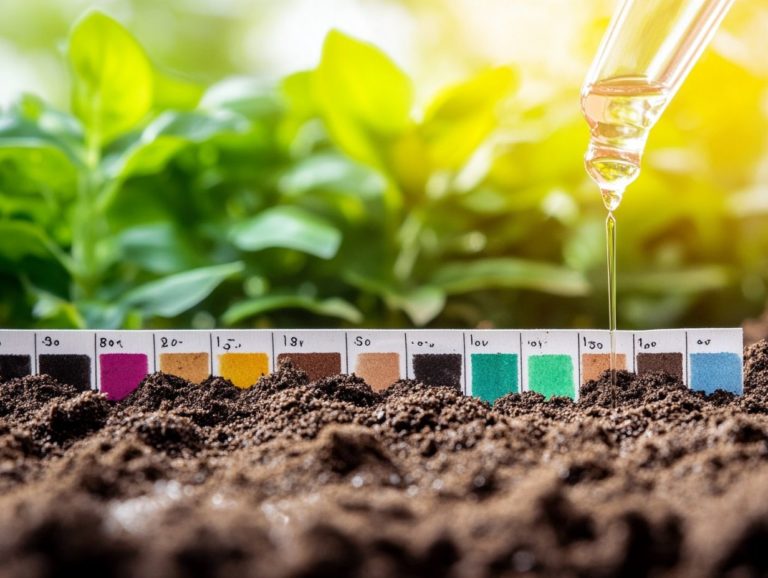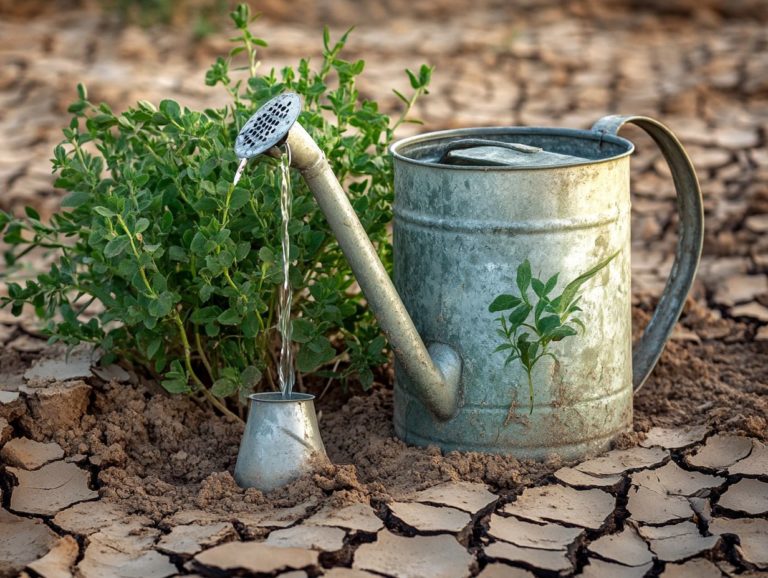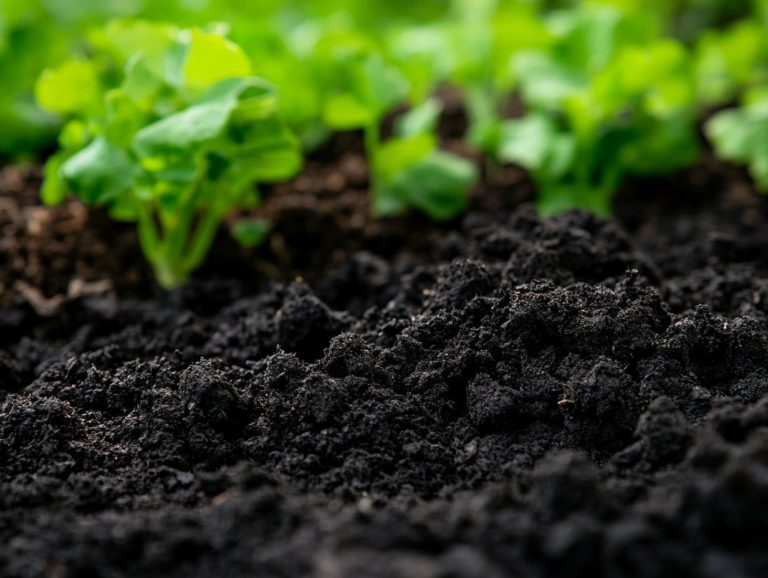Understanding the Water Cycle in Soil Management
Water is an essential element that profoundly influences the health of soil and the vitality of plants. Its significance goes far beyond simply providing hydration; it plays a crucial role in shaping soil structure, determining nutrient availability, and maintaining the overall balance of ecosystems, including the hydrology of the biosphere.
Join us as we explore the intricate relationship between water and soil, examining the water cycle, including precipitation and evaporation, its impact on soil properties, and effective management strategies.
By grasping how to optimize water within soil, you can elevate agricultural productivity, promote food security, and foster sustainable practices. Discover with us the complexities of soil water management and unlock the potential for a healthier environment.
Contents
- Key Takeaways:
- The Importance of Water in Soil
- The Water Cycle in Soil
- Effects of Water on Soil
- Managing Water in Soil
- Measuring and Monitoring Soil Water Content
- Frequently Asked Questions
- What is the hydrologic cycle in soil management?
- How does understanding the hydrologic cycle benefit soil management?
- What is the role of evaporation in the hydrologic cycle of soil management?
- How does precipitation contribute to the hydrologic cycle in soil management?
- Why is infiltration important in the hydrologic cycle of soil management?
- How does transpiration affect the hydrologic cycle in soil management?
Key Takeaways:
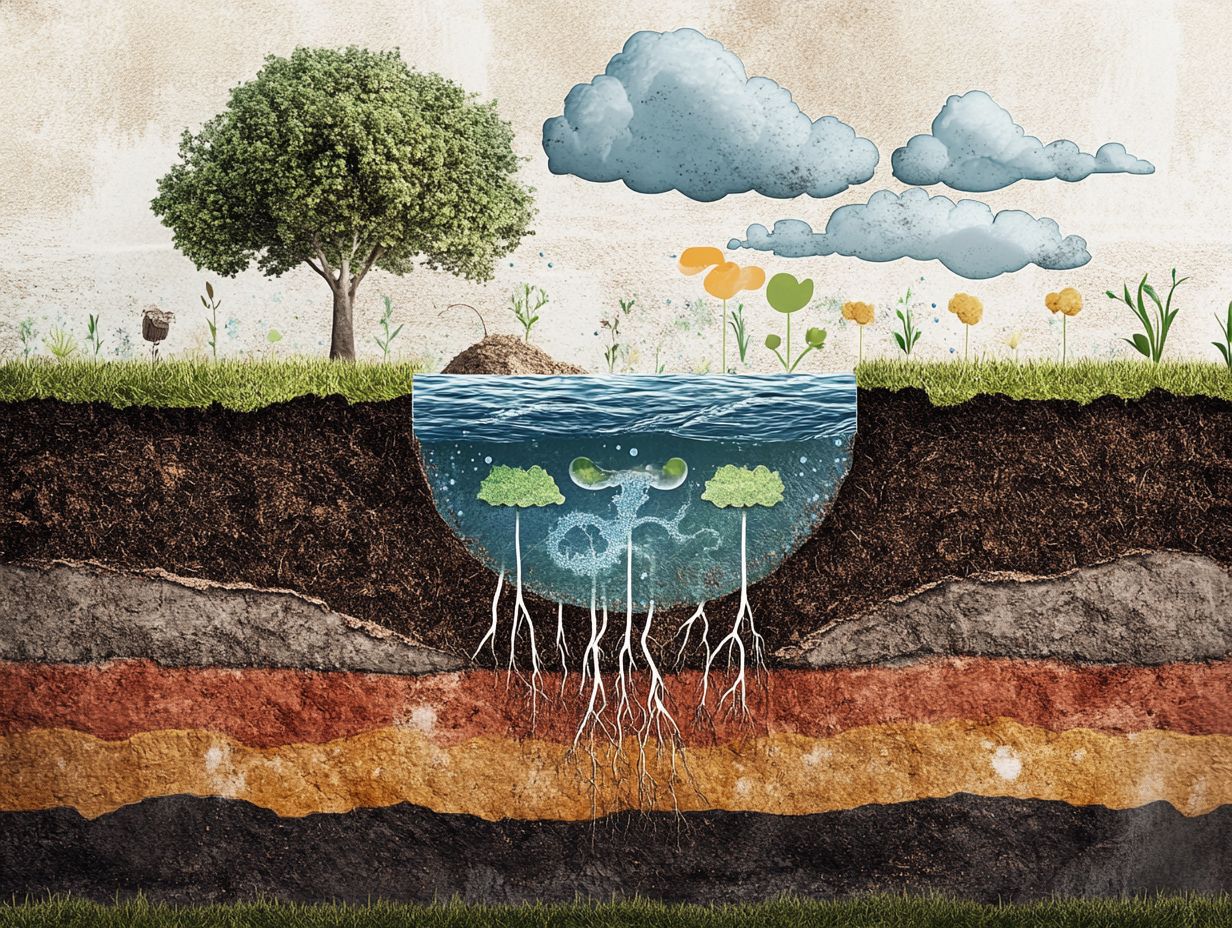
- Water is a crucial factor in maintaining healthy soil and promoting plant growth, benefiting both ecosystem services and agricultural practices.
- The water cycle in soil consists of various stages, including precipitation, infiltration, and evapotranspiration.
- The presence or absence of water in soil can greatly affect its structure and nutrient availability. Proper water management strategies are essential for drought resilience and food security.
The Importance of Water in Soil
Water is critical to soil health and productivity. It serves as a cornerstone for agricultural practices and ecosystem services.
Maintaining soil moisture, helping nutrient cycling, and fostering plant growth ultimately strengthens food security and promotes the sustainability of our landscapes.
Effective water management is crucial for ranchers and farmers, especially considering climate change. Challenges like water scarcity and groundwater depletion can significantly impact agricultural output and soil vitality.
Understanding how the water cycle operates, including its role in groundwater recharge, is essential for navigating these pressing concerns.
Role of Water in Soil Health and Plant Growth
Water plays a vital role in maintaining soil health and promoting plant growth. It helps the flow of nutrients and keeps moisture levels essential for vibrant vegetation.
Its importance goes far beyond simple hydration. By managing water wisely through thoughtful irrigation practices, you can influence the overall structure of the soil.
This promotes air flow through the soil, enhancing its capacity to retain organic matter. Such retention is crucial for nutrient cycling and soil health.
The relationship between moisture and soil is symbiotic, enriching the microbiome and supporting a diverse array of plant life.
By strategically applying water through irrigation, you enhance soil health and secure a stable food supply, contributing significantly to food security.
Healthier soils lead to increased productivity, allowing crops to flourish and ultimately sustaining both communities and ecosystems.
The Water Cycle in Soil
The water cycle in soil consists of several vital stages evaporation, condensation, precipitation, and infiltration. These stages are essential for maintaining the balance of freshwater resources.
This continuous cycle facilitates the movement of water through different reservoirs, transitioning from the surface to underground aquifers and back into the atmosphere.
This process not only replenishes soil moisture levels but also supports ecosystems and agricultural practices. Understanding this hydrological cycle is crucial for effective water management, especially in an era marked by climate variability and challenges related to water scarcity.
Act now to ensure sustainable water practices in your agricultural endeavors. Your actions can make a difference!
Stages of the Water Cycle
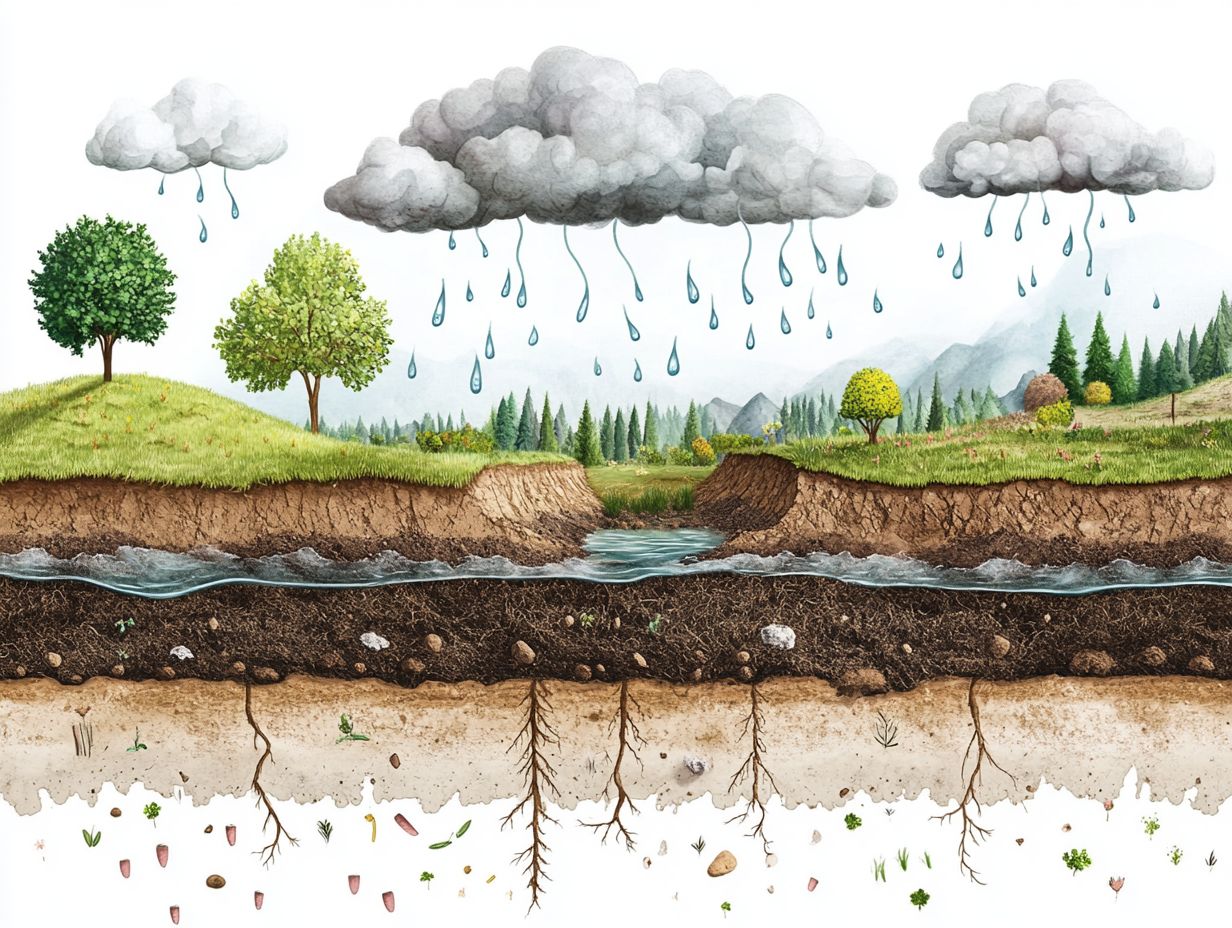
The stages of the water cycle evaporation, condensation, precipitation, and infiltration play a crucial role in maintaining the delicate balance of water resources.
As the sun warms bodies of water, it transforms liquid into vapor through a process called evaporation. This vapor ascends into the atmosphere, where it cools and condenses into tiny water droplets, creating clouds.
Eventually, these droplets gather and fall back to Earth as precipitation, replenishing vital surface water sources like rivers and lakes. This replenishment is essential for natural ecosystems and significantly impacts agricultural practices. Good water management helps crops get the moisture they need. This is vital for healthy growth.
Once precipitation occurs, the water seeps into the soil, promoting infiltration. This process enhances groundwater recharge and supports sustainable farming techniques. It ensures that both the environment and agriculture can flourish together, contributing to improved food security.
Effects of Water on Soil
Water plays a pivotal role in shaping soil properties. It influences everything from soil structure to nutrient availability and the overall health of ecosystems.
The relationship between water and soil is essential for effective agricultural practices. When water retention is optimized, it bolsters soil health and nurtures organic matter.
Conversely, excessive surface runoff can lead to pollution and degrade water quality. This impacts freshwater resources and the overall health of ecosystems. Understanding these dynamics is increasingly vital in the context of climate change. Shifts in precipitation patterns can dramatically alter soil behavior and affect food security.
How Water Affects Soil Structure and Nutrients
Water is essential for shaping soil structure and determining nutrient availability. This significantly impacts the health of crops and ecosystems.
Maintaining the right moisture levels is crucial. It enhances soil structure and promotes water retention. This encourages the aggregation of soil particles, leading to improved aeration and drainage for better nutrient flow. This balance also supports the decomposition of organic matter, enriching the soil with vital nutrients.
Proper moisture levels create a thriving ecosystem within the soil. They promote microbial activity that efficiently cycles nutrients. Focusing on sustainable practices in soil management like cover cropping and reduced tillage can enhance moisture retention. These practices also safeguard groundwater resources, promote carbon sequestration, and support sustainability.
Healthy groundwater systems are vital for maintaining soil health, sustaining agricultural productivity, and bolstering the overall resilience of ecosystems.
Managing Water in Soil
Mastering effective water management can transform your soil and boost your crop yields! It is essential to maintain optimal moisture levels, boost agricultural productivity, and promote sustainability, especially in the context of climate variability and the need for clean water.
By adopting efficient irrigation practices, enhancing water retention, and ensuring proper drainage, you can tackle challenges like drought resilience and water scarcity, which are increasingly pertinent today.
Additionally, focusing on practices that conserve soil moisture and improve water use efficiency helps cultivate healthier soils and achieve better crop yields. This ultimately contributes to food security, sustainable landscapes, and ecosystem services.
Strategies for Improving Water Retention and Drainage
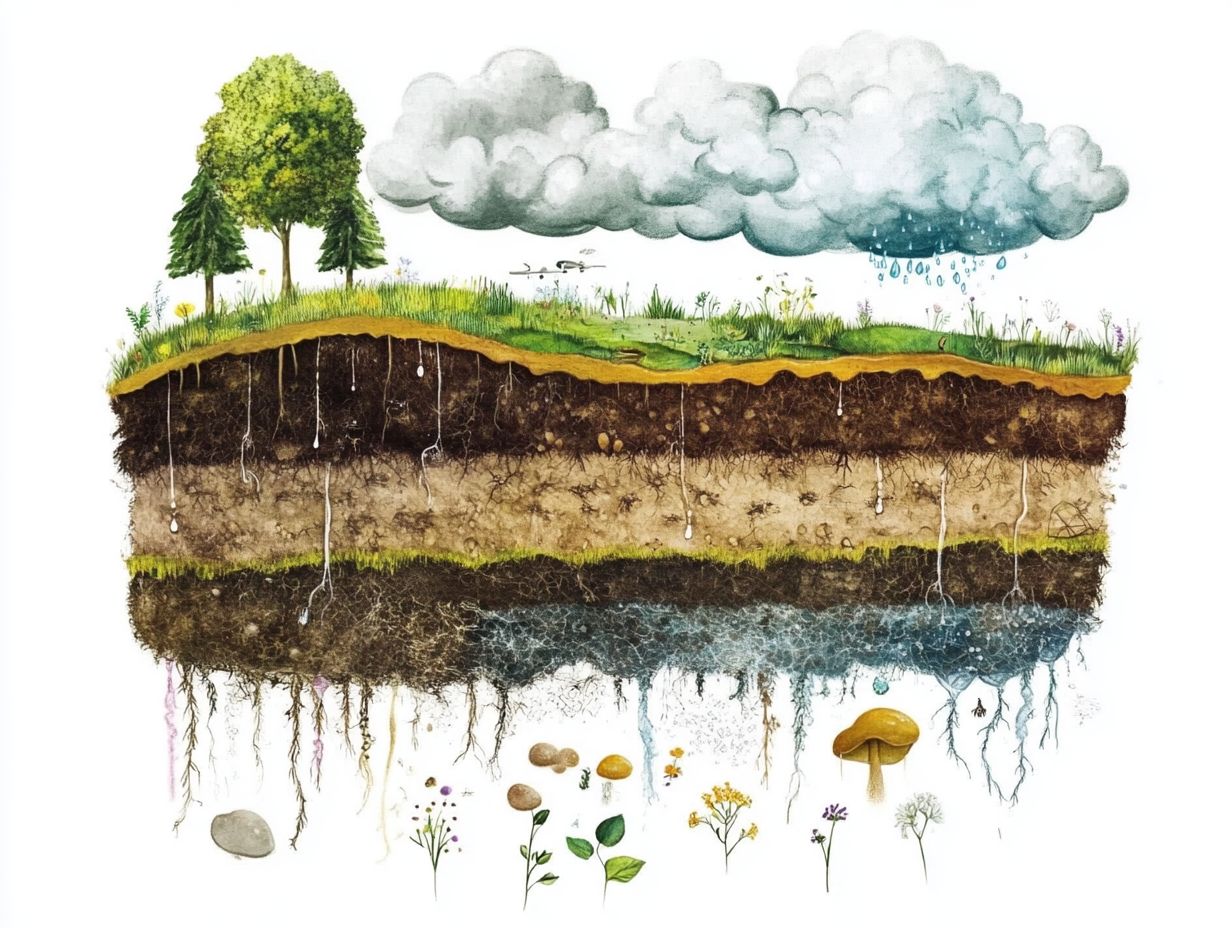
Implementing effective strategies for enhancing water retention and drainage is essential for optimizing soil health. These efforts also boost agricultural productivity.
You can explore specific techniques like contour farming, where plowing along the land’s contours reduces soil erosion and enhances water retention. This practice supports the sustainability of agricultural methods. Incorporating cover cropping is another excellent tactic that improves soil structure and fertility while fostering biodiversity. Adding organic matter, such as compost, significantly boosts the soil’s ability to retain moisture.
Establishing efficient drainage systems is vital to prevent waterlogging, which can severely damage crops. It also aids in effectively recharging groundwater levels. Each of these strategies plays a pivotal role in promoting robust crop health and fostering sustainable agricultural practices.
Measuring and Monitoring Soil Water Content
Accurate measurement and monitoring of soil water content are essential for effective water management in your agricultural endeavors. By ensuring optimal conditions for plant growth, you contribute to sustainable practices that benefit both your crops and the environment.
Utilizing various tools will give you the power to assess soil moisture levels with precision, enabling informed irrigation decisions and the maintenance of water quality.
Climate change makes these practices essential for enhancing drought resilience and boosting agricultural productivity, all while safeguarding precious freshwater resources.
Tools and Techniques for Measuring Water Levels in Soil
A variety of tools are at your disposal for measuring water levels in soil, enabling effective irrigation practices and ensuring optimal water quality.
Among these, soil moisture meters serve a crucial function by providing direct readings of moisture levels, giving you the power to determine the ideal time to water your plants. Capacitance sensors measure how well the soil holds moisture, offering real-time data essential for effective resource management.
Tensiometers (devices that measure the moisture level in soil by assessing the force plants use to draw water) give you valuable insights into whether the soil is too dry or adequately moist.
By integrating these advanced instruments into your irrigation systems, you can significantly enhance irrigation efficiency while promoting sustainable soil practices. This ultimately leads to healthier crops and the conservation of precious water resources, thereby improving food security and responding to climate change challenges.
Frequently Asked Questions
What is the hydrologic cycle in soil management?
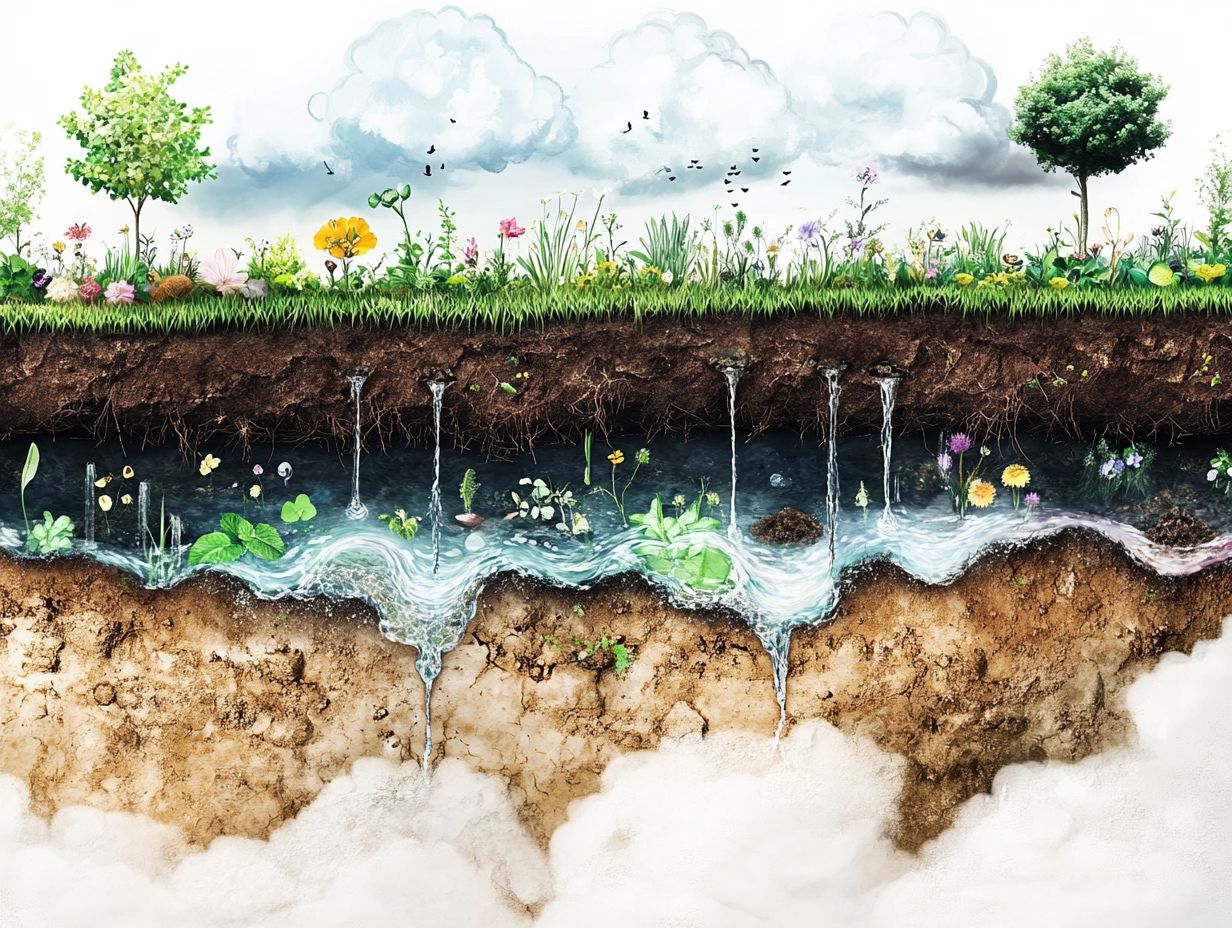
The water cycle in soil management refers to the continuous movement of water through the soil, atmosphere, and plants. It involves evaporation, precipitation, infiltration, and transpiration, which are essential for maintaining healthy soil and plant growth.
How does understanding the hydrologic cycle benefit soil management?
Understanding the water cycle is crucial for effective soil management because it helps farmers and gardeners make informed decisions about irrigation, drainage, and nutrient management. It also aids in preventing erosion and conserving water resources.
What is the role of evaporation in the hydrologic cycle of soil management?
Evaporation is the process by which liquid water on the soil surface is converted into water vapor and enters the atmosphere. It plays a significant role in soil management by reducing the amount of water available for plants and soil organisms, which can affect plant growth and nutrient uptake.
How does precipitation contribute to the hydrologic cycle in soil management?
Precipitation, like rain or snow, is crucial as it provides water for plants and replenishes groundwater. It also helps nutrients move through the soil profile.
Why is infiltration important in the hydrologic cycle of soil management?
Infiltration is when water seeps into the soil and replenishes groundwater. This process is vital for managing soil because it regulates moisture and prevents runoff and erosion.
It also provides essential water for plant growth, ensuring healthier crops and gardens.
How does transpiration affect the hydrologic cycle in soil management?
Transpiration is how plants lose water vapor through their leaves. This process regulates how much water is available for plants and soil organisms.
It also cools and humidifies the surrounding air, creating a healthier environment for growth.



